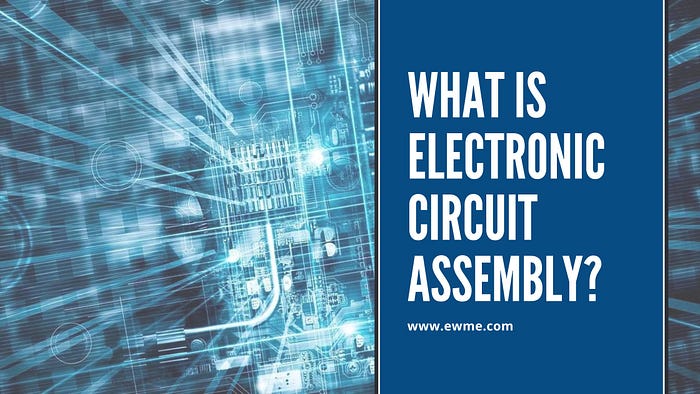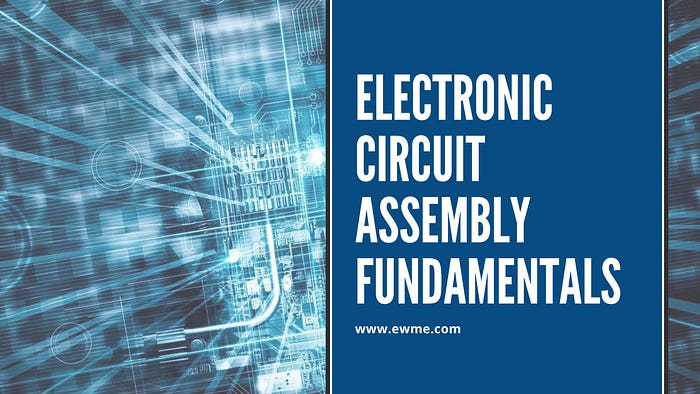What Is Electronic Circuit Assembly?
What has always seemed like a riddle to you? What makes your laptop or smartphone work seamlessly? Why does the temperature change exactly when your smart thermostat knows it should?
These common technical wonders are achieved thanks to electronic circuit assembly. It is an interesting and complex process that gives life to various gadgets. But what is it all about? Let’s find out.
Electronic Circuit Assembly Fundamentals
Circuit assembly can be compared with solving a difficult puzzle. The success of the whole system depends on each individual piece or component fitting perfectly. From resistors and capacitors to microprocessors and diodes — everything has its place in this big picture.
What Is Electronic Circuit Assembly?
In simpler words, it is making electronic gadgets by fixing various electronic parts on a printed circuit board (PCB). This task has several steps like PCB designing, placing components, soldering them and examining the end product.
Why Do We Need It?
Think about the last time your phone or laptop stopped working correctly. How irritating was that? One small malfunction within an electric circuit can lead to serious problems with a device’s performance as a whole.
That is why this process should be accurate and careful. It makes sure that all parts work together without any failures thus providing reliable and effective performance of electronic devices for you.
The Steps Involved
So, what is the process of creating an electronic device from its individual components? Well, assembly involves the following steps:
Step 1: Designing the PCB
Beginning of the process, this part is about creating the Printed Circuit Board Assemblies (PCB) of design which is done by engineers. They use specific kinds of software tools that help them create a plan or a blueprint which shows how various components would be connected through conductive paths on the board itself. Also, it illustrates where every part should go.
Step 2: Procuring Components
This step comes after finalizing the PCB design. Here, everything needed for assembly is acquired starting from minute resistors up to complex microprocessors. High level of care must be taken when selecting these items since their quality greatly affects the final product’s reliability.
Step 3: Placing Components
When all parts are ready, assembly work begins by putting them onto the board. There are two ways of doing this: either manually or automatically. In case of large scale production, automated pick-and-place machines are used which can handle thousands of units per hour with pinpoint accuracy thus saving time tremendously.
Step 4: Soldering Components
Putting in place is followed closely by soldering so that they may stay firmly fixed onto the PCB. On this account, what happens is that molten metal alloy gets employed to form strong electrical joints between components and the board itself.
Hand soldering suits best when dealing with a few pieces but where there are many of them, machines such as wave or reflow soldiers should be considered.
Phase 5: Performance Testing and Control
After all the necessary components have been soldered into place, the whole circuit is subjected to thorough testing. This is to make sure that there is good connection in every joint and the circuit works as it should. Any faults found are rectified at this stage hence the final product is assured of meeting high quality standards.
Types of Electronic Assembly Manufacturing
Electrical board combinations can never be universal. What kind of gathering to use depends upon the application and multifaceted nature of the device. Coming up next are the absolute most regular kinds of gatherings.
Surface Mount Technology (SMT)
Today, SMT is the most regularly used technique in electronic circuit assembly. This involves placing components directly onto the surface of a printed circuit board (PCB) which allows for more compact designs and greater efficiency. For high volume production this is ideal because it is fast and accurate.
Through-Hole Technology (THT)
In contrast to SMT where parts are positioned on the board, THT requires that component leads be inserted into holes drilled through PCBs before soldering them in place. This method creates stronger mechanical bonds that can endure physical stress such as those exerted by connectors or large capacitors.
Mixed Technology
In some cases, both SMT and THT may be utilized within one assembly. Manufacturers do this so that they can take advantage of each method’s strengths which in turn allows them to have more versatile and reliable designs for their circuits.
The Role of Electronic Manufacturing Services
When there’s a need for companies to assemble electronic circuits, most of them opt for electronic manufacturing service in Austin. These are firms that specialize in such activities as designing PCBs, sourcing components, testing prototypes among others.
By contracting an EMS company businesses will save time and money because they can focus on their core competencies while still delivering high quality products.
Final Thoughts
Building electronic circuits is at the heart of modern technology. Without them, our everyday devices wouldn’t exist. Grasping how complicated this task is can enhance your electronics knowledge. Next time you’re tweaking your thermostat or playing with your mobile phone, take a moment. Reflect on how all those miniature parts found their place.
If you’re looking to learn more about East West Manufacturing, we’ve got you covered! Check out our range of services that can help turn your electronic project ideas into reality. Don’t hesitate to contact us today for more information–we’re excited to work with you!




Comments
Post a Comment